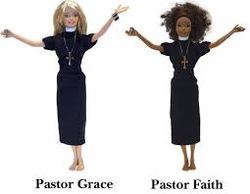|
|
 An Excerpt from my contribution to, "A Faithful Witness:Essays Honoring David Sebastian's Heart and Mind for the Church" In developing a sermon, perhaps we are helped here to discuss the process, the labyrinth from discovery to pronouncement in terms of a series of movements. Some years ago, Andy Stanley and Lane Jones authored a book called; Communicating for Change, and in it they outlined a helpful process for those learning the art of public speaking. In this text, Stanley suggests a pattern of, “Me-We-God-You-We” as the basic road map for effective communication.[1] For Stanley and Jones, the idea is that speakers would craft their material around the ideas above so that the calculated progression of the talk would build towards a climax through the notion of a natural flow of conversation. While Stanley and Jones offer a helpful guide, this essay will tweak the process and suggest some changes to reflect the particularity of sermon craft for the building up of the kingdom of God. Here the discovery of voice is fashioned around the art of story such that the sermon then is crafted from Spirit revelation in God’s story as well as in our own. Our Story The beginning of a sermon intended for the community of the baptized is always the collective human experience. Quite naturally, as we want to draw those assembled into our conversation, into the experience of the Gospel enacted, we begin by building connection. In Blue Like Jazz: Non-Religious Thoughts on Faith, Donald Miller reminds us that people only really listen to the folks they believe genuinely like them.[2] Miller’s point instructs us to remember that in our first moments of proclamation it is crucial that we connect, bond, forge relationship with the listener so that our teaching, our exposition, our truth will be received. To be sure, this is an important first step in the dynamic relationship of preacher and congregation established in the initial moments of the preaching act and it is here that many well intentioned preachers fail to relate to their hearers. This is where a pastor must know intimately her community, must understand the journey they are on together, must be aware of the struggles and losses and celebrations that together weave the story of those who have assembled. Here we reflect on the words of William Willimon who suggests pastors should understand worship as pastoral care. Willimon suggests that the question before each preacher is “How can I help my congregation do what they want to do (worship God) but may not remember how to do?”[3] This becomes more difficult, of course, if the preacher is visiting or is not known to the congregation. In this case, the preacher must be aware of universal needs, conversations that are national and local so that she might engage those who have come to worship. Whatever the context, some common thread must be found and spoken forth so that preacher and congregation hold hands and place trust in one another as together they move forward in the experience. In this task, we are instructed by the example of the Apostle Paul, who was, in every sense of the word, a relational leader. For Paul, it was critical to situate himself within the community so that he might speak to it. Paul was not only a student of Hebrew Scriptures but he was also well versed in the philosophies of Greek culture and Roman religious practices of the day. He was able to know and be known in the communities in which he preached such that after he departed he could write back to them and address specific community concerns. Though there are more examples than space will allow, consider his expert approach in Galatians where at once he is addressing the Celts of Galatia and the Judaizers from Antioch and knows so intimately the debates among them that he is able to thwart both at the same time. In chapter 3, he masterfully scolds the Galatians and discusses salvation in terms of circumcision which is the matter at issue while relating stories of Abraham and interpreting the circumcision act now a matter of heart (3.1-29). [1] Andy Stanley and Lane Jones, Communicating for Change: Seven Keys to Irresistible Communication (Colorado Springs: Multnomah Books, 2006), 46. [2] Donald Miller, Blue Like Jazz: Non-Religious Thoughts on Faith (Nashville: Thomas Nelson, 2003), 222. [3] William Willimon, Worship as Pastoral Care (Nashville: Abingdon, 1979), 18.
0 Comments
Leave a Reply. |
Subscribe Today for Free GiftBLOG
Archives
June 2019
Categories
All
|

 RSS Feed
RSS Feed